Exploring the fundamental states of matter – solids, liquids, and gases – is crucial for scientific understanding, impacting everything from daily life to complex weather systems.
These concepts aren’t merely academic; they’re interwoven into our experiences, like cooking or observing atmospheric changes, making learning engaging and relevant.
Numerous resources, including free worksheets and hands-on STEM activities, are available to help students grasp these principles through experimentation and investigation.
Discover the world around us, composed of these three phases, and unlock the secrets of matter with accessible learning tools and captivating experiments;
What is Matter?
Matter constitutes everything we perceive and interact with, forming the very essence of our physical world, including our own bodies. It’s the “stuff” that possesses mass and occupies space, existing in various forms we categorize as solids, liquids, and gases.
Understanding matter begins with recognizing its fundamental building blocks – atoms and molecules – which combine to create the diverse substances around us. These building blocks are constantly in motion, and the degree of this motion dictates the state of matter.
Exploring matter isn’t just about identifying its state; it’s about investigating its properties and how it changes. Worksheets focusing on solids, liquids, and gases help students classify everyday objects and understand these transformations. Hands-on activities and experiments further solidify these concepts, making learning interactive and memorable.
From simple observations to complex scientific inquiries, the study of matter provides a foundation for comprehending the universe and our place within it. It’s a gateway to understanding chemistry, physics, and countless other scientific disciplines.
The Three States of Matter
Matter predominantly exists as a solid, liquid, or gas, each defined by distinct physical properties relating to particle arrangement and energy levels. Solids maintain a fixed shape and volume due to tightly packed particles, while liquids take the shape of their container, with particles more loosely bound.
Gases, conversely, expand to fill any available space, exhibiting high particle energy and minimal intermolecular forces. These states aren’t absolute; matter can transition between them through processes like melting, freezing, evaporation, and condensation.
Worksheets designed around solids, liquids, and gases provide a structured approach to understanding these differences, often involving classification exercises and property comparisons. Engaging activities, like observing ice melting or water boiling, reinforce these concepts practically.
Exploring these states is fundamental to grasping broader scientific principles, offering a tangible connection to the world around us. Learning about these states is essential for understanding everyday phenomena and scientific processes.

Understanding Solids
Solids possess a definite shape and volume, stemming from tightly packed particles resisting deformation, a key concept reinforced by worksheets.
Defining Characteristics of Solids
Solids are distinctly characterized by their fixed shape and volume, a result of their molecules being tightly bound together in a rigid structure. This close packing restricts movement, preventing solids from easily changing their form or expanding to fill available space.
Unlike liquids or gases, solids resist compression and maintain their integrity under pressure. They exhibit properties like hardness, brittleness, or malleability, depending on the specific arrangement and bonding of their constituent particles.
Worksheets focusing on solids often emphasize identifying objects with these properties, differentiating them from liquids and gases through observation and classification exercises. Students learn to recognize that solids hold their shape, even when transferred to different containers, a fundamental distinction.
Understanding these characteristics is foundational for grasping more complex concepts in chemistry and physics, and printable PDFs provide accessible practice for reinforcing these core principles.
Examples of Solids in Everyday Life
Solids are ubiquitous in our daily surroundings, forming the building blocks of the world we interact with. Consider a wooden chair – it maintains its shape, providing a stable seat. A metal spoon, a glass window, and a plastic toy all exemplify the defining characteristics of solids: fixed shape and volume.
Even seemingly complex objects, like a computer or a book, are ultimately composed of solid materials. Rocks, ice (frozen water), and even our own bones and teeth are readily identifiable solids.
Worksheets often utilize these relatable examples to help students categorize objects as solids, prompting them to identify the properties that confirm this classification. Recognizing solids in everyday contexts reinforces the concept and makes learning more tangible.
Printable PDFs frequently include images of common items, challenging students to distinguish solids from liquids and gases, solidifying their understanding through practical application.
Worksheet Activities: Identifying Solids
Worksheet activities designed to identify solids often employ a variety of engaging exercises. Common tasks include circling or coloring solid objects within a group of images, differentiating them from liquids and gases.
Many printable PDFs feature “cut and paste” activities, where students categorize pictures of various items into “Solid” and “Not Solid” columns, reinforcing the concept through hands-on manipulation.
Fill-in-the-blank exercises test comprehension by requiring students to complete sentences describing the properties of solids – fixed shape, fixed volume, and resistance to deformation.
More advanced worksheets might present real-world scenarios, asking students to identify solids used in specific applications, like building construction or everyday tools. These resources provide a comprehensive approach to mastering solid identification.
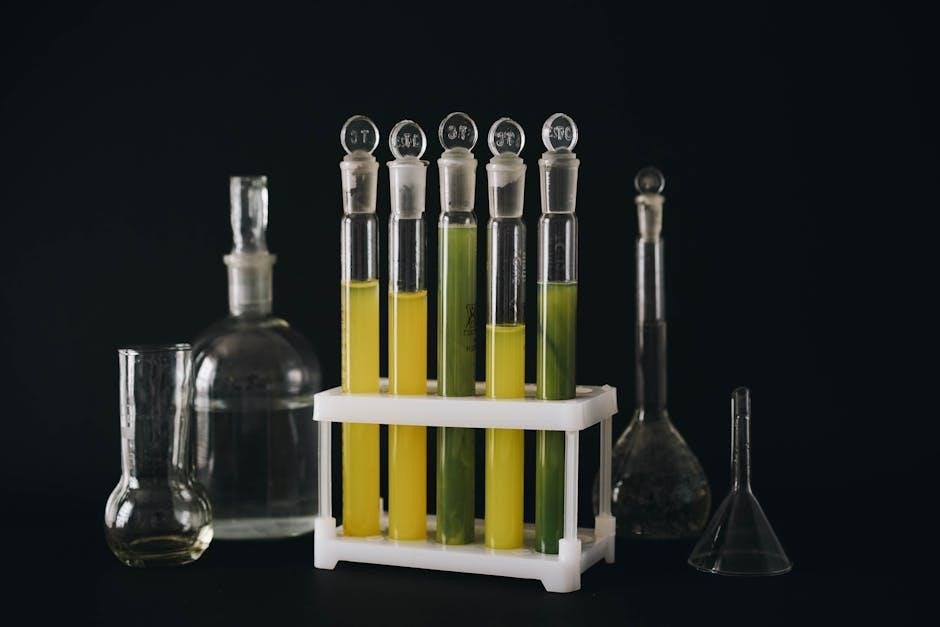
Exploring Liquids
Liquids possess unique characteristics, explored through worksheets focusing on their ability to flow, take the shape of their container, and maintain a constant volume.
Defining Characteristics of Liquids
Liquids are fascinating states of matter distinguished by their ability to flow and conform to the shape of their container, unlike solids which maintain a fixed form.
However, liquids retain a constant volume, meaning the amount of space they occupy doesn’t readily change – a key difference from gases which expand to fill available space.
This unique property stems from the molecules within a liquid being closely packed, yet possessing enough energy to move past one another, allowing for fluidity.
Worksheets often emphasize these characteristics, prompting students to observe and record how liquids behave in different scenarios, such as pouring or mixing.
Understanding concepts like viscosity – a liquid’s resistance to flow – further enhances comprehension, with thicker liquids exhibiting higher viscosity.
Exploring these properties through hands-on activities and printable PDFs solidifies the understanding of what defines a liquid state of matter.
These characteristics are fundamental to understanding many everyday phenomena, from the water we drink to the oils we cook with.
Examples of Liquids in Everyday Life
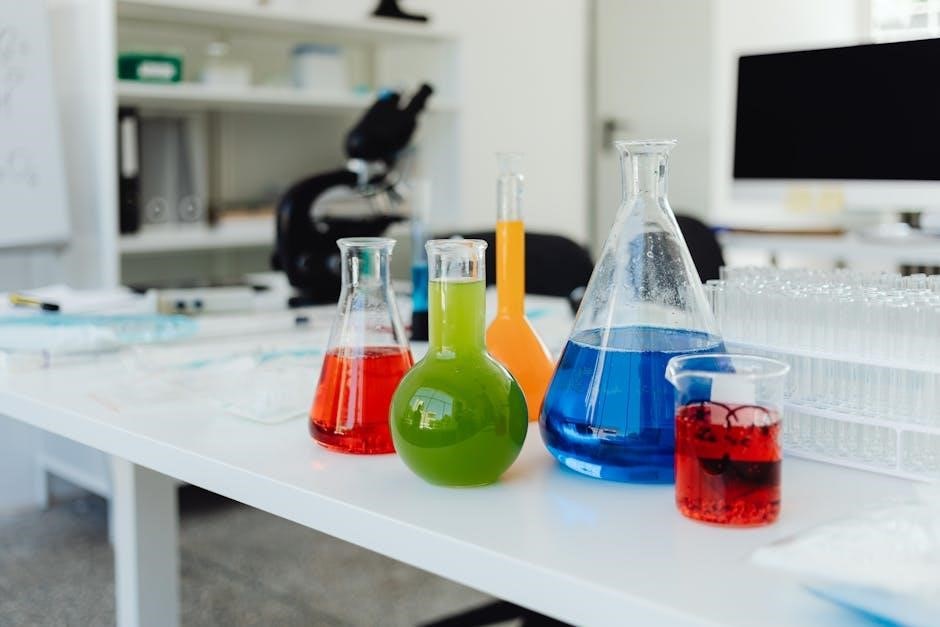
Liquids are ubiquitous in our daily routines, playing vital roles in countless applications. Water, the essence of life, is perhaps the most prominent example, sustaining ecosystems and human existence.
Beverages like juice, milk, and soda are liquids we consume regularly, providing hydration and nourishment. Cooking oils, such as olive oil and vegetable oil, are essential for preparing meals.
Cleaning products, including detergents and soaps, utilize liquid formulations to effectively remove dirt and grime. Fuels like gasoline and diesel power our vehicles, enabling transportation.
Even seemingly solid substances can exist as liquids under certain conditions; for instance, melted butter or chocolate demonstrate liquid properties when heated.
Worksheets often feature these examples, encouraging students to identify liquids in their surroundings and categorize them based on their uses.
Recognizing these everyday instances reinforces the understanding of liquids and their importance in the world around us.
Exploring these examples helps bridge the gap between scientific concepts and real-world applications.
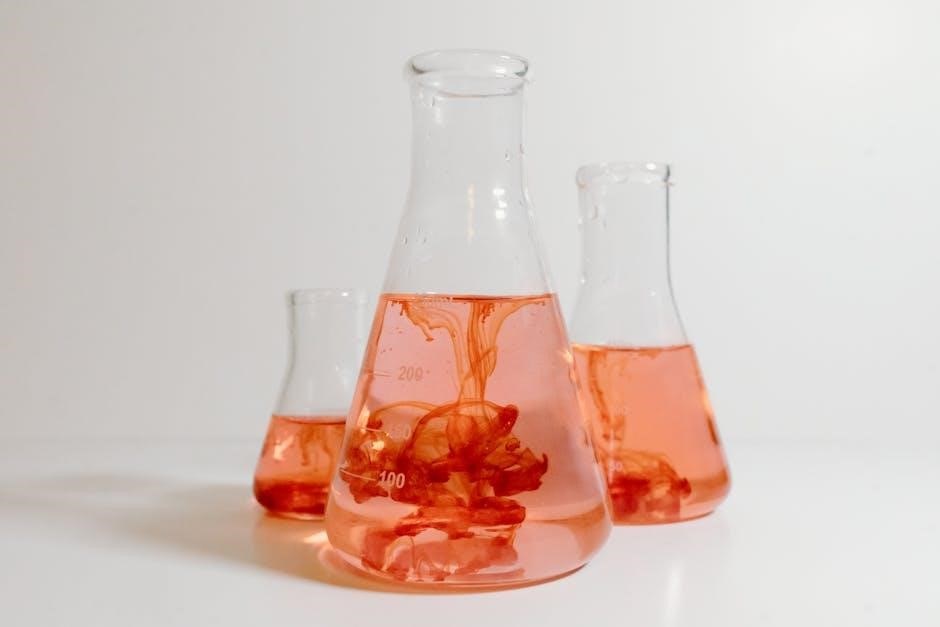
Worksheet Activities: Identifying Liquids
Worksheet activities focused on identifying liquids are crucial for solidifying understanding of their properties. Common exercises involve picture-based identification, where students categorize images as solid, liquid, or gas.
Fill-in-the-blank questions test recall of liquid characteristics – indefinite shape, ability to flow, and fixed volume. Matching exercises pair liquids with their everyday uses, like water with drinking or oil with cooking.
True or false statements challenge students to discern accurate descriptions of liquid behavior. Sorting activities require students to classify a list of substances into liquid and non-liquid categories.
More advanced worksheets might include scenarios where students predict how liquids will behave in different containers or under varying conditions.
Printable PDFs offer convenient, no-prep options for teachers and homeschooling parents, reinforcing learning through engaging practice.
These activities promote observation skills and critical thinking, fostering a deeper comprehension of the liquid state of matter.
Comprehensive worksheet packs often include answer keys for easy assessment.
Delving into Gases
Investigate gaseous characteristics through worksheets, exploring atmospheric gases and their properties; experiments like fog catchers enhance understanding of this elusive state.
Defining Characteristics of Gases
Gases are uniquely defined by their lack of fixed shape and volume, readily expanding to fill any available container – a key distinction from solids and liquids.
Unlike their condensed counterparts, gas particles possess high kinetic energy, moving rapidly and randomly, resulting in weak intermolecular forces.
This characteristic allows gases to be easily compressed and expanded, a property utilized in various applications, from inflating tires to powering engines.
Worksheets focusing on gases often emphasize these properties, prompting students to identify examples and predict behavior under different conditions.
Exploring the composition of our atmosphere – primarily nitrogen and oxygen – provides a real-world context for understanding gaseous states.
Furthermore, investigations into gas behavior, such as observing diffusion or measuring pressure, solidify comprehension through hands-on experience.
Understanding these defining characteristics is fundamental to grasping broader scientific concepts, including thermodynamics and chemical reactions.
Through targeted worksheets and engaging experiments, students can effectively unravel the mysteries of gases and their role in the world around us.
Examples of Gases in Everyday Life
Gases are pervasive in our daily routines, often unseen but essential for life and numerous processes. The very air we breathe is a mixture of gases, primarily nitrogen and oxygen, supporting respiration.
Carbon dioxide, released during breathing and combustion, plays a vital role in plant life and contributes to the greenhouse effect.
Helium, lighter than air, fills balloons, providing lift and entertainment, while methane is a common component of natural gas used for heating and cooking.
Worksheets often challenge students to identify these gases and their applications, reinforcing their understanding of gaseous states.
Consider the steam rising from a hot cup of tea – water in its gaseous form – or the air inflating a tire on a bicycle.
These everyday examples demonstrate the dynamic nature of gases and their impact on our surroundings.
Exploring these instances helps students connect abstract concepts to tangible experiences, solidifying their grasp of the topic.
Recognizing gases in action fosters a deeper appreciation for the science that governs our world.
Worksheet Activities: Identifying Gases
Worksheet activities focused on identifying gases often involve observing properties like compressibility and expansion. Students might analyze scenarios depicting balloons inflating or gases escaping from containers.
Many printable PDFs present diagrams requiring students to label gases involved in processes like photosynthesis or respiration, reinforcing their understanding of gaseous roles.
Exercises can include matching gases to their uses – oxygen for breathing, carbon dioxide for plant growth – or identifying gases based on descriptions of their behavior.
Some worksheets challenge students to differentiate between gases, liquids, and solids based on particle arrangement and movement.
Fill-in-the-blank questions and multiple-choice quizzes assess comprehension of gaseous characteristics and common examples.
These activities promote critical thinking and analytical skills, enabling students to confidently identify gases in various contexts.
Comprehensive worksheet packs often include answer keys for self-assessment and teacher guidance.
Utilizing these resources enhances learning and solidifies understanding of the gaseous state of matter.
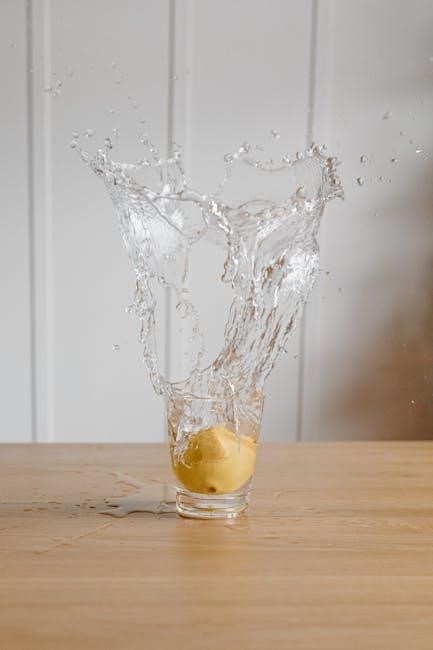
Changes in State
Worksheets illustrate transitions – melting, freezing, evaporation, and condensation – showing how substances shift between solid, liquid, and gaseous forms, aided by temperature.
Melting: Solid to Liquid
Melting represents the fascinating transformation of a substance from its solid state to a liquid state, typically triggered by an increase in temperature and energy absorption.
Worksheets focusing on melting often present scenarios involving ice turning into water, chocolate becoming molten, or butter softening, prompting students to identify the process.
These educational resources frequently include diagrams illustrating the molecular changes occurring during melting – molecules gaining energy and overcoming intermolecular forces.
Activities might involve predicting melting points of different substances or observing the melting process firsthand through simple experiments, like tracking ice cube melting rates.
Understanding melting is fundamental to grasping the broader concept of phase changes and the relationship between temperature, energy, and the states of matter.
Printable PDFs often incorporate questions assessing comprehension of the melting process and its real-world applications, reinforcing learning through practical examples.
Students can explore how different materials melt at varying temperatures, connecting this to their everyday observations and scientific inquiry.
Freezing: Liquid to Solid
Freezing is the reverse process of melting, representing the change of a substance from a liquid state to a solid state, usually caused by a decrease in temperature and energy loss.
Worksheets dedicated to freezing often feature examples like water becoming ice, juice solidifying into a popsicle, or wax hardening, encouraging students to recognize the transformation.
These learning materials commonly include visuals depicting the molecular arrangement during freezing – molecules losing energy and forming a fixed, crystalline structure.
Activities might involve predicting freezing points or conducting experiments to observe the freezing process, such as freezing different liquids and comparing their rates.
Comprehending freezing is essential for understanding phase transitions and the impact of temperature on the physical state of matter.
Printable PDFs frequently contain questions evaluating understanding of the freezing process and its practical applications, solidifying knowledge through relatable scenarios.
Students can investigate how different liquids freeze at different temperatures, linking this to real-world observations and scientific exploration.
Evaporation: Liquid to Gas
Evaporation describes the process where a liquid transforms into a gas, typically occurring at the surface as molecules gain enough energy to overcome intermolecular forces.
Worksheets focusing on evaporation often present scenarios like water drying from clothes, puddles disappearing, or steam rising from a hot beverage, illustrating everyday examples.
These educational resources frequently include diagrams showcasing molecules escaping from the liquid phase and becoming dispersed as a gas, emphasizing energy absorption.
Activities might involve observing evaporation rates under different conditions – temperature, surface area, humidity – fostering scientific inquiry and data analysis.
Understanding evaporation is crucial for grasping the water cycle, weather patterns, and various industrial processes.
Printable PDFs commonly feature questions assessing comprehension of evaporation and its influencing factors, reinforcing learning through practical application.
Students can explore how evaporation cools surfaces, connecting this to body temperature regulation and cooling systems, enhancing scientific literacy.

Condensation: Gas to Liquid
Condensation is the opposite of evaporation, representing the change of a substance from its gaseous phase to a liquid state, releasing energy in the process.
Worksheets dedicated to condensation often depict examples like dew forming on grass, water droplets on a cold glass, or clouds appearing in the sky.
These resources frequently utilize diagrams illustrating gas molecules losing energy and clustering together to form a liquid, emphasizing the role of cooling.
Activities might involve creating condensation by breathing onto a cold mirror or observing cloud formation in a jar, promoting hands-on learning.
Understanding condensation is vital for comprehending weather phenomena, the water cycle, and the operation of various technologies.
Printable PDFs commonly include questions assessing understanding of condensation and the conditions that favor its occurrence, solidifying knowledge.
Students can investigate how condensation contributes to fog, mist, and precipitation, broadening their scientific perspective and analytical skills.
Hands-on Activities & Experiments
Engaging experiments, like creating Oobleck or simulating melting ice caps, vividly demonstrate states of matter, complementing worksheet learning and fostering exploration.
Oobleck: A Non-Newtonian Fluid
Oobleck, a fascinating mixture of cornstarch and water, beautifully illustrates the unusual properties of non-Newtonian fluids, challenging simple classifications of solids and liquids.
When pressure is applied, Oobleck behaves like a solid, resisting deformation; however, when left undisturbed, it flows like a liquid, offering a tangible experience.
This hands-on activity allows students to directly observe how substances can exhibit characteristics of multiple states, prompting critical thinking about matter’s behavior.
It’s a fantastic complement to worksheets focusing on solids, liquids, and gases, providing a memorable and interactive learning experience that reinforces theoretical concepts.
Experimenting with Oobleck encourages investigation into viscosity and the impact of force, solidifying understanding beyond rote memorization and sparking scientific curiosity.
Furthermore, it’s a safe and readily accessible experiment, making it ideal for classroom or home-based learning, enhancing engagement with the states of matter.
Melting Ice Caps Experiment
The “Melting Ice Caps” experiment vividly demonstrates the change of state from solid ice to liquid water, connecting abstract concepts to real-world phenomena like climate change.
Students can simulate polar ice caps using ice cubes and observe the effects of “rising temperatures” – represented by warm water or a heat source – on their volume.
This activity highlights the process of melting, a key transition between states of matter, and allows for discussions about the impact of environmental factors on physical properties.
Integrating this experiment with states of matter worksheets reinforces learning by providing a practical application of the concepts presented in printable materials.
Measuring the water volume resulting from melted ice provides quantitative data, fostering scientific skills like observation, data collection, and analysis.
It’s a powerful visual representation of a complex issue, promoting environmental awareness alongside scientific understanding of solids, liquids, and state changes.
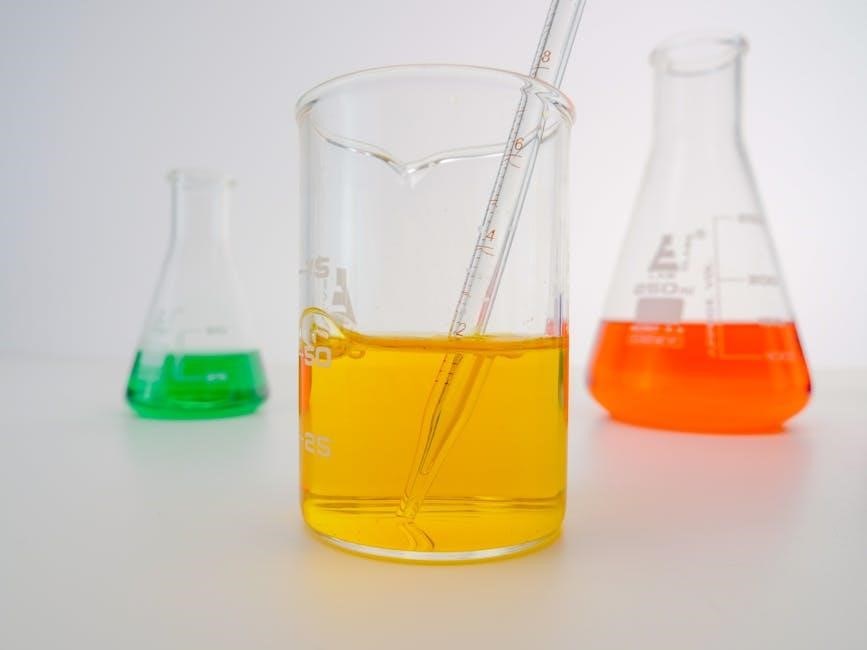
Worksheet Resources & Printable PDFs
Numerous free, no-prep states of matter worksheets are readily available online, offering comprehensive science learning for kids about solids, liquids, and gases.
These printable PDFs provide engaging activities and reinforce understanding through practice, making learning both fun and effective for students of all ages.
Free States of Matter Worksheets
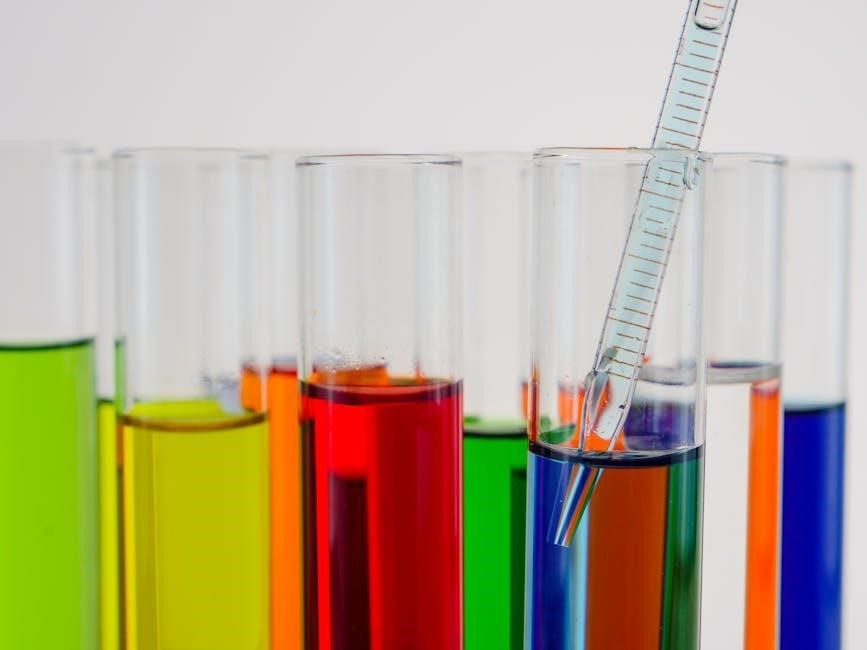
Discover a wealth of freely accessible states of matter worksheets designed to reinforce learning about solids, liquids, and gases for students of various ages. These printable resources offer a diverse range of activities, including identification exercises, matching games, and fill-in-the-blank questions, catering to different learning styles.
Many worksheets focus on classifying everyday objects into their respective states, promoting observational skills and practical application of concepts. Others delve into the properties of each state, such as shape, volume, and particle arrangement, fostering a deeper understanding of the underlying science.
Teachers and parents can easily download and print these worksheets for classroom use or at-home learning, providing a convenient and cost-effective way to supplement science education. Explore options that include answer keys for easy assessment and tracking of student progress, ensuring effective learning outcomes. Find resources tailored to specific grade levels, ensuring age-appropriateness and optimal engagement.
Comprehensive Worksheet Packs
Elevate your states of matter instruction with meticulously curated, comprehensive worksheet packs, offering a holistic learning experience beyond individual worksheets. These packs typically include a variety of activities – from basic identification tasks to more challenging experiments and critical thinking exercises – all centered around solids, liquids, and gases.
Expect to find detailed answer keys, allowing for efficient assessment and feedback. Many packs incorporate colorful illustrations and engaging graphics to capture students’ attention and enhance comprehension. They often cover related concepts like changes of state (melting, freezing, evaporation, condensation) in a progressive manner.
These resources are ideal for teachers seeking a complete unit plan or parents desiring a structured learning approach. Look for packs that include assessments, quizzes, and even hands-on activity guides to maximize learning impact. Investing in a comprehensive pack saves time and ensures thorough coverage of the topic.
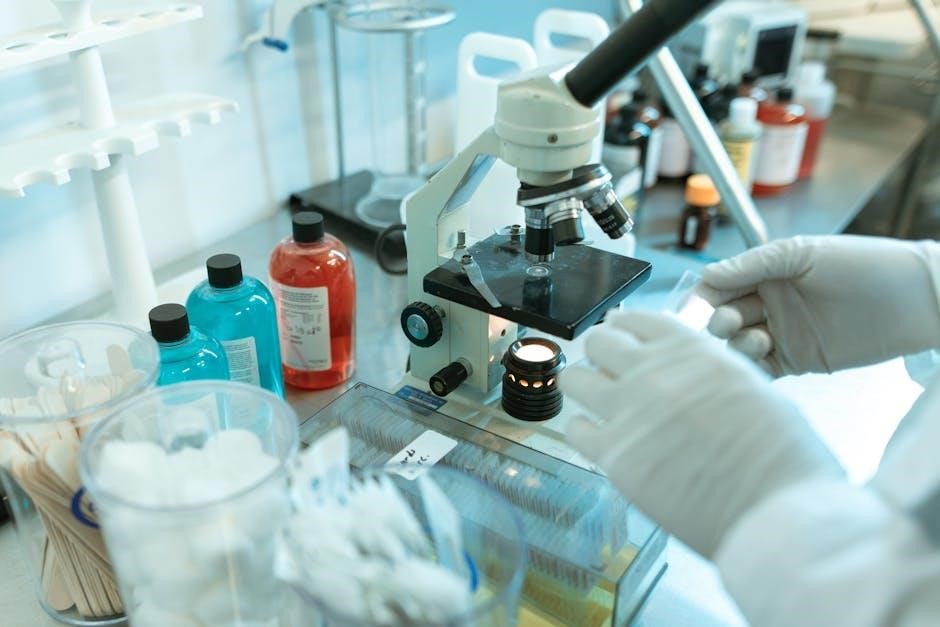
Advanced Concepts (For Older Students)
Beyond solids, liquids, and gases lies plasma, the fourth state of matter, explored through advanced worksheets and challenging scientific investigations.
Plasma: The Fourth State of Matter
Venturing beyond the familiar states of matter – solids, liquids, and gases – introduces us to plasma, often termed the fourth state. Unlike its more common counterparts, plasma isn’t readily observed in everyday life, though it’s incredibly prevalent in the universe; stars are largely composed of plasma!
Plasma forms when a gas is heated to extremely high temperatures, causing electrons to strip away from atoms, resulting in an ionized gas. This ionized state exhibits unique properties, responding strongly to magnetic fields and conducting electricity efficiently.
Examples include lightning, neon signs, and the interior of fusion reactors. While worksheets focusing specifically on plasma are less common than those for solids, liquids, and gases, advanced science curricula often incorporate its study. Exploring plasma requires a deeper understanding of atomic structure and energy levels, bridging the gap between basic matter states and complex physics.
Further investigation can involve researching plasma applications in technology and astrophysics, expanding scientific horizons.
